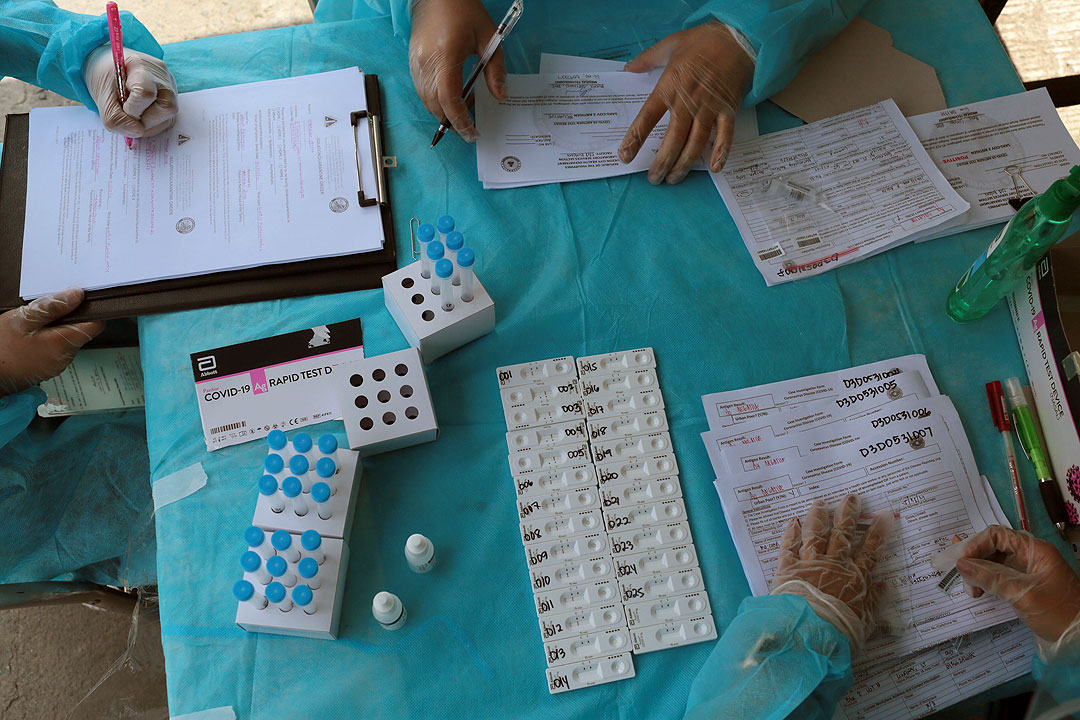PHL needs to expand COVID-19 testing outside Luzon, says ADB
PHL needs to expand COVID-19 testing outside Luzon, says ADB
PHL needs to expand COVID-19 testing outside Luzon, says ADB
October 7, 2021 12:33 am

THE PHILIPPINES needs to focus more resources into expanding coronavirus disease 2019 (COVID-19) testing and tracing automation outside Luzon, according the Asian Development Bank (ADB).
The ADB report on the progress of the government’s coronavirus response program for the first half of 2021 found that testing laboratories are concentrated in Luzon, with levels below World Health Organization (WHO) recommendations.
“With rising infections and emerging COVID-19 variants, it is vital that the government expands testing capacities, especially in the regions,” the ADB said.
“Further collaboration between the public and private sectors should be pursued. Ensuring reliable supply of materials for testing laboratories is also important.”
The ADB last year approved a $1.5-billion loan aimed at partly funding the government’s COVID-19 response program that would assist affected businesses through wage subsidies, loan and credit guarantees, and direct cash aid.
The ADB said that contact tracing done manually by local government units is still inadequate, noting that a national automated system will help reach more communities.
“It is important to increase the contact tracing ratio while cutting down the time to identify close contacts of cases from days to hours to quickly interrupt chains of transmission,” ADB said.
The Philippines continues to see a rise in COVID-19 cases as the government loosened lockdown restrictions to help revive the pandemic-battered economy.
The Health department on Wednesday reported 9,868 new COVID-19 infections from 43,759 tests conducted. The active number of COVID-19 cases stood at 112,807.
At the same time, the ADB said the Philippine government should support worker upskilling to help transition to technology-based sectors from sectors that depend on personal contact such as tourism and retail trade.
“Unemployment benefits need to be enhanced so the system of social protection has a more solid foundation,” the multilateral bank said.
The unemployment rate in August was at 8.1%, the highest since April’s 8.7%, preliminary data from the Philippine Statistics Authority showed.
The ADB recommended more livelihood assistance and expanded small business support, which means integrating lending programs with other forms of assistance.
Also, the report noted some areas indicating progress, including emergency subsidies under the social amelioration program, small business credit guarantee and lending, digitalization, infrastructure, and reforms to support economic recovery.
The government, ADB said, was on track to reach its pandemic response outputs.
“While progress has been achieved, the unprecedented scale and prolonged duration of the pandemic have placed greater demands on the government’s programs,” it said.
“The pandemic continues to evolve rapidly and the recent surge in COVID-19 cases is straining health system capacity, increasing the need for testing, tracing, quarantine, and treatment while simultaneously accelerating vaccination.”
Finance Secretary Carlos G. Dominguez III in August said the government has raised $19.6 billion (P979.6 billion) so far from loans and grants from external lenders to fund its pandemic response.
The Department of Finance is currently in talks with the World Bank, ADB, and Asian Infrastructure Investment Bank for up to $900 million in
fi
nancing for additional vaccine supply for next year. —
Jenina P. Ibañez
